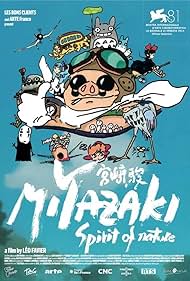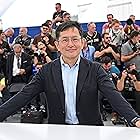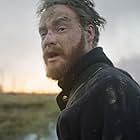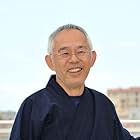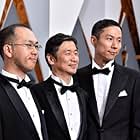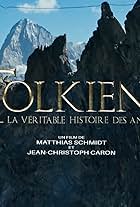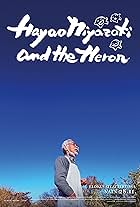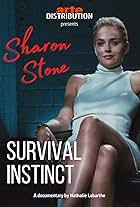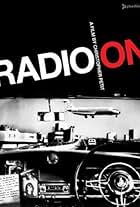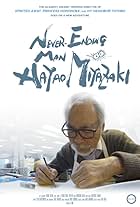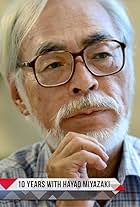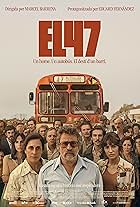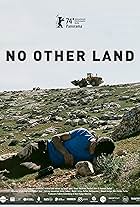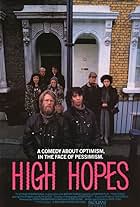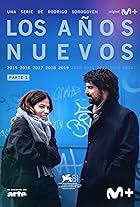A documentary exploring the life and influential works of Japanese animator Hayao Miyazaki, known for films like My Neighbor Totoro and Spirited Away, focusing on his passion for animation a... Read allA documentary exploring the life and influential works of Japanese animator Hayao Miyazaki, known for films like My Neighbor Totoro and Spirited Away, focusing on his passion for animation and advocacy for the natural world.A documentary exploring the life and influential works of Japanese animator Hayao Miyazaki, known for films like My Neighbor Totoro and Spirited Away, focusing on his passion for animation and advocacy for the natural world.
- Awards
- 1 nomination total
Photos
- Director
- Writers
- All cast & crew
- Production, box office & more at IMDbPro
Storyline
Featured review
This documentary premiered at the last edition of the Venice Film Festival and introduces us to Hayao Miyazaki like never before. Hayao, founder of Studio Ghibli, has been transporting us to unique universes with his films for over 50 years. My Neighbor Tororo, Spirited Away or Princess Mononoke are the top ten of his films, which have already become cult classics. Thanks to privileged access to his work and interviews with his son, director Goro Miyazaki, and with Toshio Suzuki, producer and friend of Hayao, we discover the life, cinema and influences of the director. In fact, In 2014, Miyazaki was awarded an Honorary Academy Award for his impact on animation and cinema.
Miyazaki's early work was as a mangaka, when Hayao first saw the film The Panda and the Magic Serpent, he made the decision to dedicate himself to film animation. His first film was Panda and Friends, made with his usual collaborator Takahata. And he worked for the powerful Toei film company , working in Horus: Prince of the Sun (1968), a precursor to the ' Shónen style' in anime (Dragon Ball, One Piece, Naruto), its then revolutionary ideas were copied and perfected to the point of exhaustion in the most popular series and films of the genre. Surrounded by a young and ambitious team led by the then unknown and newcomer Hayao Miyazaki, he provided the set design and ideological support for much of this film. But this was a time of student revolt and strikes and director Takahata and Miyazaki (future founders of Studio Ghibli who met here for the first time) were idealists with left-wing convictions at the time. This caused a strong clash with Toei, since the working conditions were precarious and exhausting. His next film was ¨The Castle of Cagliostro¨, which was a commercial failure, however today it is a highly revered film and a cult film. Due to the previous failure, Hayao became a mangaka again, drawing the manga series, Nausicaa. Due to its success, he continued with the film adaptation: Nausicaa of the Valley of the Wind (1984). He founded Ghibli Studios with his partner, friend and long-time collaborator Takahata. Since then, he has since directed, written, and produced many other films with Isao Takahata. More recently, he has produced with Toshio Suzuki. All enjoyed critical and box office success, in particular Princess Mononoke (1997). It received the Japanese equivalent of the Academy Award for Best Film and was the highest-grossing (about USD $150 million) domestic film in Japan's history at the time of its release.
In addition to animation, he also draws manga. His major work was Nausicaä, an epic tale he worked on intermittently from 1982 to 1984 while he was busy making animated films. Another manga Hikotei Jidai, later evolved into Porco Rosso (1992). Other important animes were : Castle in the Sky (1986), Ponyo (2008) , Tales from Earthsea (2006) along with his son Goro Miyazaki, and, of course, his masterpiece Spirited away (2001).
The documentary is very instructive, thanks to it we learn the main keys to Hayao's work: his interest in the environment, ecology, natural and man-made disasters, environment, climate change, Japanese religion as Shintoism, Animism , spiritual beings like the Camy, etc. He was born during the Second World War, and suffered the consequences as a child, being very worried due to his mother's tuberculosis. We learn of his interest in aviation because his relatives worked in aircraft manufacturing, especially he loved the iconic plane in his films, the Mitsubishi A6M Zero, which operated in WWII. As well as his fondness for vegetation and trees such as the camphor tree, especially the one located in Nagoya.
Miyazaki's early work was as a mangaka, when Hayao first saw the film The Panda and the Magic Serpent, he made the decision to dedicate himself to film animation. His first film was Panda and Friends, made with his usual collaborator Takahata. And he worked for the powerful Toei film company , working in Horus: Prince of the Sun (1968), a precursor to the ' Shónen style' in anime (Dragon Ball, One Piece, Naruto), its then revolutionary ideas were copied and perfected to the point of exhaustion in the most popular series and films of the genre. Surrounded by a young and ambitious team led by the then unknown and newcomer Hayao Miyazaki, he provided the set design and ideological support for much of this film. But this was a time of student revolt and strikes and director Takahata and Miyazaki (future founders of Studio Ghibli who met here for the first time) were idealists with left-wing convictions at the time. This caused a strong clash with Toei, since the working conditions were precarious and exhausting. His next film was ¨The Castle of Cagliostro¨, which was a commercial failure, however today it is a highly revered film and a cult film. Due to the previous failure, Hayao became a mangaka again, drawing the manga series, Nausicaa. Due to its success, he continued with the film adaptation: Nausicaa of the Valley of the Wind (1984). He founded Ghibli Studios with his partner, friend and long-time collaborator Takahata. Since then, he has since directed, written, and produced many other films with Isao Takahata. More recently, he has produced with Toshio Suzuki. All enjoyed critical and box office success, in particular Princess Mononoke (1997). It received the Japanese equivalent of the Academy Award for Best Film and was the highest-grossing (about USD $150 million) domestic film in Japan's history at the time of its release.
In addition to animation, he also draws manga. His major work was Nausicaä, an epic tale he worked on intermittently from 1982 to 1984 while he was busy making animated films. Another manga Hikotei Jidai, later evolved into Porco Rosso (1992). Other important animes were : Castle in the Sky (1986), Ponyo (2008) , Tales from Earthsea (2006) along with his son Goro Miyazaki, and, of course, his masterpiece Spirited away (2001).
The documentary is very instructive, thanks to it we learn the main keys to Hayao's work: his interest in the environment, ecology, natural and man-made disasters, environment, climate change, Japanese religion as Shintoism, Animism , spiritual beings like the Camy, etc. He was born during the Second World War, and suffered the consequences as a child, being very worried due to his mother's tuberculosis. We learn of his interest in aviation because his relatives worked in aircraft manufacturing, especially he loved the iconic plane in his films, the Mitsubishi A6M Zero, which operated in WWII. As well as his fondness for vegetation and trees such as the camphor tree, especially the one located in Nagoya.
Details
- Release date
- Country of origin
- Languages
- Also known as
- Miyazaki: Spirit of Nature
- Production companies
- See more company credits at IMDbPro
- Runtime1 hour 24 minutes
- Color
Contribute to this page
Suggest an edit or add missing content

Top Gap
By what name was Miyazaki, L'Esprit de la Nature (2024) officially released in Canada in English?
Answer